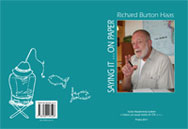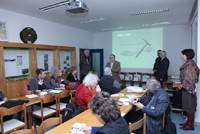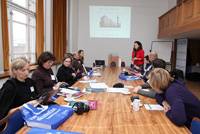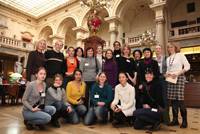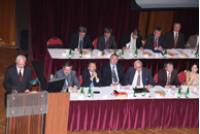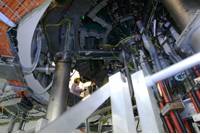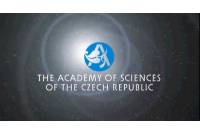The European Commission has appointed Robert-Jan Smits as new Director General for Research on 2 June 2010. He has a lot of experience in many areas, especially in coordination research programmes and moves to get small and medium-sized enterprises into the Framework Programmes. Previous assignment of Robert-Jan Smits was in JRC as a Deputy Director General. He was also responsible for developing the European Research Council (ERC), the European Technology Platforms (ETPs) as well as for the shaping of the Joint Technology Initiatives (JTI). His interview with CZELO office is focused mainly on the 7. Framework Programme and its results and future perspectives.
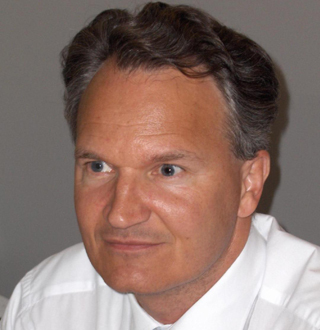
Photo: Europien Commission
Technological progress and innovation are main drivers of economic performance and growth. This goes for Member States but very much as well for regions. It is therefore essential to continue investing in R&D both by public and private sectors in the regions, especially during the current financial contrary wind.
The European Union has three main programmes for Research and Innovation for which considerable amounts of money are available. First of all, the Framework Programme for Research and Technological Development, in which two specific actions for regions are introduced, namely the Regions of Knowledge and Research Potential. Secondly, the Structural Funds. Thirdly, the CIP, namely the Competitiveness and Innovation Programme. All three can possibly be used simultaneously and/or subsequently.
The synergy between the Framework Programme for Research and Technological Development, the Structural Funds and the Competitiveness and Innovation Programme is an important issue on which, thanks to the excellent cooperation between different Commission services, enormous progress has been made. The European Commission published in 2007 a Communication on the "Competitive European Regions through Research and Innovation" on this matter in which specific measures aimed at synergy and strategic alignment are announced. This Communication was followed by the presentation of a the production of a 'Practical Guide to EU funding opportunities for research & innovation' which provides potential beneficiaries of EU research and innovation funding with straightforward and simple information on the sources of funding that are available. This publication is accessible online, via the DG Research website. And indeed we see already the first good examples of synergy in the use of the different sources of EU research and innovation funding in the Member States. One of these concerns the infrastructural project 'ELI', in which the Czech Republic is involved, where the planning phase of this project was financed by the Research Framework Programme and the construction phase will be financed partly by EU structural funds.
For the period of three months (April – June 2010) you were the Deputy Director General of the EC Joint Research Centre (JRC). In what research areas do you see the greatest potential of JRC?
Let me first of all say that I enjoyed tremendously working at the JRC. The JRC's role as provider of scientific and technical support is essential in the European policy making process.
With its strategy 2010-2020 (just published at http://ec.europa.eu/dgs/jrc/index.cfm?id=2550), the JRC will provide scientific-technical support to several items of the EU2020 agenda and to other EU policy areas for which it has a particular mandate. For this purpose, it will organise its scientific activities into 7 programmes: Towards an open and competitive economy; Development of a low carbon society; Sustainable management of natural resources; Safety of food and consumer products; Nuclear safety and security; Security and crisis management; Reference materials and measurements. The JRC will in particular strengthen its competences in economics and modelling which will enable it to develop a more integrated approach to supporting policy making. It will also develop a more forward-looking approach, all of which is very much in line with the recommendations for a "step-change" called for by the evaluation of the JRC chaired by Sir David King.
The number of financial instruments is increasing, often supporting the same areas of research. Are you considering to map and simplify the current status in order to make these processes more transparent, so that the researchers could identify easily (at one glance) these possibilities?
Over the past years the European research landscape has indeed evolved. Without losing of its continuity, the Framework Programmes and other programmes that aim to support research and technological development, need to be assessed to guarantee accessibility and effectiveness for the individual researchers and research consortia. This can only be done by reducing red tape and simplifying rules and procedures.
The Commission issued a Communication on Simplification in April of this year. This Communication presents measures and options for simplifying EU research funding, with the view to ensure that EU research funding promotes the highest quality research and attracts the best researchers. Ideas such as introducing lump sums and using average personnel costs are presented in this paper. The Commission has already started implementing practical improvements and this will continue, including notably clearer and more accessible guidance documents and services, by streamlining the guides, removing unnecessary jargon and using consistent terminology .The Commission is also committed to ensuring a more uniform application of rules and to optimising the structure and timing of calls for proposals. Besides these measures the Commission facilitates all kind of communication tools to streamline the accessibility to its research funds, such as the website Euraxess and the Participant Portal that is currently developing into a unique platform for all interactions between the Commission and the beneficiaries, providing information and support in project management. Moreover, the Commission is also exploring the possibilities of providing more unique IT tools for the Community research, education and innovation programmes.
The FP7 is now approaching the “halftime” and many discussions about FP7 current operational performance and the future shaping and adjustments arise. Which according to you are the main concerns needed to be assessed for the second half of the FP7 with a view to the preparation of the future Framework Programme?
We are indeed at the Interim Evaluation of the Seventh Framework Programme. This evaluation is currently underway and led by a group of independent experts, chaired by Rolf Annerberg. The overall objective is to assess the rationale, the implementation and the achievements of FP7 so far, with a focus on the programmes and FP7 as a whole. The Expert Group will put the first results of FP7 into perspective. The report of the Expert Group should also highlight those aspects of FP7 for which in the view of the experts corrective measures are needed.
Besides the work done on the Interim Evaluation, the Commission on her side is working on the implementation of the Europe 2020 Strategy, in particular by the preparations on the Innovation Union Flagship. This flagship will be launched in September 2010. Investment in research and innovation is the only smart way out of the crisis and the way towards sustainable growth. Focus is needed on the major economic and societal challenges such as climate change, energy and food security, health and an ageing population. The Innovation Union will address the measures that are needed in the field of Research and Innovation in order to respond to those challenges.
The Innovation Union and the Interim Evaluation will be guiding documents for the Commission, when it prepares by the end of 2011 its proposals to the European Parliament and Council on a future Framework Programme. As for previous Framework Programmes, there will be extensive consultation with stakeholders before the Commission brings forward its proposal. The main consultation is likely to begin by Spring 2011. I hope that the Czech science community will actively participate in this debate!
The design of research funding after 2013 is also part of the broader discussion on the future shape of the EU budget and will be in line with the Europe 2020 Strategy. We will have to aim at combining existing European and national instruments in the field of education, research and innovation and align them in such a way that they can contribute to solve these major societal issues.
Finally we will have to explore the new opportunities that the new Lisbon Treaty offers to the development of the ERA.
CZELO – Czech Liaison Office for Research and Development, Brussels,
Technology Centre AS CR
8 Oct 2010


 Česky
Česky




